- Home
- Gerald Durrell
Beasts in My Belfry Page 13
Beasts in My Belfry Read online
Page 13
He would, once he got to know me better, occasionally take a few minutes off from his life’s work of trying to eat something that was not edible and he would then honour me with a game. His idea of a game was curious and strenuous. It consisted quite simply of putting his head down and charging me. My side of the play consisted of trying to take the full force of his attack in my cupped hands, at the same time stepping to one side. This required considerable speed and practice and should I not be up to form I would find myself lying on my back, painfully winded, while Billy stood over me shaking his beard in my face, his yellow eyes full of malicious laughter. If I spent too long in regaining my feet I would quite possibly find half my tie missing, for sport of any kind always increased Billy’s appetite tremendously.
To watch Peter feeding was an education. His enormously long, bright blue tongue would raise itself round a sprig of hay with incredible delicacy. You got the impression indeed that the tongue almost had a life of its own, for it would choose and reject food with unerring accuracy while Peter appeared to be in a trance. To see him pick up food from the floor was another extraordinary sight. For this he employed two methods – the first was to bend both front legs at the knee until his head was low enough to get the food. The other, more frequently employed, was also more complicated and dangerous. He would edge his huge front legs apart, spreading them wider and wider, inch by inch, until he could swing his long neck down and pick up the delicacy with his tongue. He employed extreme caution with this manoeuvre, for should his foothold give way he would go crashing down, legs spread out and both his shoulder blades, his legs and most possibly his back would be broken.
Even when you knew that Peter had accepted you, cleaning his house was inclined to be an eerie experience. Sweeping vigorously with the brush, I would not hear his almost inaudible approach – the faint scruff of his padded hooves on the parquet – and the first warning would be his deep and contemplative sigh down the back of my neck. I would then look over my shoulder and see him towering some twelve feet above me, and the surprise of this was not calculated to soothe the nerves. His great dewy eyes would be full of curiosity, his under-jaw would move rhythmically from side to side as he chewed the cud, his nostrils would widen, and he would breathe another gust of hay-scented breath at me. Then his great neck would swing his head some sixteen feet away and with his slouching stride he would drift off to probe with his blue tongue in the hay-rack. Peter was never vicious while I worked with him but I knew that a well-aimed kick from one of those giant hooves could kill a lion should the need arise and so I treated him with caution. The main thing was not to scare him. This, of course, applies to any animal that you are looking after, but the giraffe is of an extraordinarily nervous disposition and if frightened might well dash off into a hysterical canter, almost impossible to stop, which could end in either heart failure from exhaustion or possibly a broken leg. This, of course, would be an extreme case; normally, if frightened, the automatic impulse is to lash out with the hind legs or bring the head sweeping down in a scythe-like motion which literally cuts the enemy down like grass.
In a zoo, of course, the immense size of a giraffe and its beautiful skin, like a vivid tapestry, make him seem one of the most noticeable of animals, whereas in fact, in the natural state, he is probably one of the best camouflaged. Gordon Cumming states that:
In the case of the giraffe, which is invariably met with among venerable forests, where innumerable blasted and weather-beaten trunks and stems occur, I have repeatedly been in doubt as to the presence of a troop, until I had recourse to my telescope, and on referring to my savage attendants I have known even their practised eyes deceived, at one time mistaking these dilapidated trunks for camelopards, and again confounding real camelopards with these aged veterans of the forest.
Peter’s silence was very noticeable and accentuated by Billy’s habit of talking to himself in a series of muttered ‘baas’ while he pottered to and fro looking for food. I think Peter’s silence was more noticeable because it was more complete – not only vocal but physical. His large hooves whispered on the wooden flooring and the sudden whistling swish of his tail was always startling. He would stand there quite still, looking straight through you, contemplating some obscure and absorbing memory; delicately, almost absentmindedly, his blue tongue would appear, curve gracefully round a sprig of hay and pull it into his mouth; he would chew automatically, his expression unchanged, still with that faraway look in his eyes. Tall, slender, with his long sensitive face, his melting eyes, and that long-legged swinging walk, he was a perfect Beau Brummell. He could really, I decided, only be described by one word – he looked cultured.
The only time Peter ever did anything which could be remotely described as vulgar was when he chewed the cud. He would stand contemplating me as I swept the floor of his house, his under-jaw moving rhythmically from side to side, then he would swallow the mouthful and his jaw would become still, a glazed expression would spread over his face and if you looked you would think that his mind was full of beautiful, poetical thoughts. He would have an air of waiting for something. At last it would come and it was so in congruous that it was almost laughable. Deep in the poet’s stomach you could hear a curious rumbling which ended in a sort of pop. A ball of food would make its appearance at the base of his long neck and, bulging the skin as it went, would travel upwards with all the majesty of a department store lift. The ball was generally about the size of a coconut and it would end its travels by rolling into his mouth. A satisfied expression would replace the look of thoughtful genius and Peter’s lower jaw would recommence its monotonous movement. I could never make out whether he could control the supply of food. It must be embarrassing in the wild state to have, say, one’s declaration of love suddenly interrupted by this loud and stately regurgitation of one’s breakfast.
It was not until I was working with Billy and Peter and so had them together for comparison that the giraffe’s curious mode of locomotion really impinged on me. The first day I was on the section I was watching the two animals and Billy, on one of his gastronomic quests, walked across the floor of the house closely followed by Peter. Watching them, I felt there was something queer, that their movements did not seem to match. Then I saw what it was. While Billy walked in a normal mammalian way – that is to say, the right foot forward followed by the left hind foot – Peter moved both right feet together. This gave him that curious long-legged walk with an immense, swinging, lopsided stride. It also accounted for the curious way that giraffes sway when cantering. Both right legs being off the ground at the same time, the full weight of the body is thrown on to the left leg and so the head and neck are swung over to the right to counteract; when the left legs come into play the neck is swung over again. So they go dipping and swaying across the grass, their necks swinging from side to side like huge chequered pendulums.
The fact that Peter was incarcerated with Billy caused, I am afraid, considerable confusion in the minds of the great British public. Most of the visitors leapt to an inaccurate conclusion after one hasty glance.
‘Ooh, look! A baby . . . a baby giraffe! Ooh, isn’t he sweet!’ they would cry, to which, in most cases, Billy would reply with a hearty and completely un-giraffe-like ‘baaa’. This, however, would have no effect on his audience.
‘Wonder why he hasn’t got any spots like his mum,’ they would ask each other.
‘Perhaps they come after, like.’
‘Wonder why he hasn’t got a long neck?’
‘Well, he’s only a baby, see. It’s got to grow.’
Peter would gaze at them reprovingly from a distance, displaying none of the maternal instincts that were expected of him. Billy would be far too busy pressing up to the wire begging them for titbits to worry about what people thought he was.
Billy had worked the process of soliciting food down to a fine art. I have seen him, five minutes after disposing of three large turnips, rush frantically out to meet a visitor, with a rolling eye and
an unsteady gait that argued a normal diet only a shade above starvation level.
‘He seems to be awfully hungry,’ the victim would remark to you, giving you a look that implied volumes.
‘Oh, he’s always hungry,’ you would reply with a gay laugh. ‘He eats anything. Here Billy, try this,’ and you would offer Billy a fir cone.
At any other time he would fall upon the cone as though it were his favourite food, but not now. He would give it a quick glance and turn away.
‘Is that all you give him to eat?’ the visitor would ask.
‘Oh, lord, no,’ you would protest. ‘Why, he gets an excellent diet – exactly the same as the giraffe.’
And at that moment Billy, who would be grovelling in his food pan, would reappear with a small piece of cloth hanging from his mouth, which he would chew rhythmically wearing an expression of extreme martyrdom. I discovered that you simply could not win with a goat.
If Peter was a gentle aristocrat, the same, I am afraid, could not be said of his nearest neighbours on the section, our herd of African buffaloes. They looked, and in fact, were, the direct opposite to Peter. Their dusky witches’ blackness gave them a faintly macabre appearance as they moved in a dark and glowering line across the green of their paddock. The five cows were led by a massive old bull, a magnificent though rather frightening beast. The great gnarled trunk of his horn hung low over his tiny red-rimmed eyes and his tattered ears would turn towards you with a fierce interrogativeness as you passed his paddock. Owing to his habit of rolling in his shed before it was cleaned out, his flanks were encrusted with dried dung which had cracked without falling off, making him look as though he were wearing a uniform brown jigsaw puzzle. The herd had the typically thick, sweet smell of domestic cattle but it was remarkably strong and was even apparent at some distance in the open paddock.
One thing I could praise the buffalo for was their conduct as a herd, for they moved with an almost military precision. The other herds of animals in the park were, on the whole, an unruly lot; when moving together they would fight and push in a solid and ill-mannered wedge for the best positions. Not so the buffalo; to see them crossing the paddock for a drink was a perfect example of orderly progress. In single file they would approach the pool, the old bull leading, followed by the rest in order of seniority. There was no unladylike or ungentlemanly shoving or pushing, none of that deplorable get-out-of-the-way-or-I’ll-give-you-a-jab-in-the-behind attitude of the bison. When they reached the pool they would spread out and drink deeply and unhurriedly and then stand knee-high in the water musing, still as an intricate jet carving.
The old bull, I soon discovered, had a temper as black as his hide and he would have periodic fits where his efforts to kill someone – anyone – were frightening while they lasted. At other times he was comparatively tame and he would stand with his pink-rimmed eyes half closed while you scratched his head and ears. His great patent-leather nose was always shining moistly and he had the disgusting habit of blowing great clouds of frothy spittle out of his mouth and nostrils. If you were not careful, when you scratched him he would suddenly heave a great sigh of contentment and the front of your coat would be white with bursting bubbles that he had blown on to you. At other times the devil would get into him and you had to measure the distance you stood from the wire for he was swift and deadly.
Along one side of the paddock ran one of the main paths and down this I would cycle each evening on my way home. Should the bull be in one of his bubble-blowing moods I could traverse this hundred yards without so much as an ear being twitched in my direction; but should he be in his evil mood he would swerve away from the main herd and, with his swift, lumbering gallop, would thunder along the fence at my side, tossing his giant horns and producing a deep chesty roar which was not the most attractive sound I have ever heard. From a distance this portly canter did not impress one as being very fast, but I have travelled along that path at a dangerous speed on my bicycle and the bull kept pace with me effortlessly, rattling his horns along the wire, roaring with open mouth, his hooves spreading wide with each thrust of his thick, stubby legs, leaving black scars on the brightness of the turf. The old bull had no name so I christened him Ghengis, feeling that he could, if he put his mind to it, do as much damage as any Tartar horde.
On the days when he was particularly misanthropic he would indulge in a most curious rite. He would lower his massive head and then, with a certain effort, place one foot carefully in the arch of his horn; then he would stand there ducking his head up and down, almost overbalancing, or else he would perform a sort of waltz, going round and round on three legs, pretending that his hoof was too intricately caught up to be released. These performances generally lasted about half an hour. Why he did this was not at all clear; certainly none of the cows attempted to emulate him. Indeed, they seemed vaguely embarrassed by their leader’s childishness and would remove themselves to the farthest corner of the paddock while this was going on. I could only presume that he put on this performance for the same reason that a lion paces up and down its cage or a polar bear or an elephant will weave from side to side – a soothing and interesting habit to pass the time till the next meal. Ghengis appeared to go about it with a feeling of deep interest in the outcome – would he succeed in unravelling his hoof from his horn? See next week’s thrilling instalment.
One of the old bull’s harem was a cow with only one horn and not long after I joined the section she gave birth. The baby looked not unlike an ordinary domestic calf except for his disproportionately large ears. He was an attractive shade of chocolate brown, with great bulbous leg joints and a delightfully uncontrollable tail. But two days after he was born we noticed that, although he was trotting round the paddock with his mother, he did not seem as strong as he should be. Bert and I stood and watched him.
‘What d’you think’s wrong with him, Bert?’ I asked.
‘I dunno,’ said Bert, ‘but he’s not right, that I am sure of.’
At that moment, to our complete surprise, we saw the baby endeavouring to graze. Now it was obvious that there was something very wrong, for a two-day-old calf does not start grazing if he is getting his proper food. With the aid of oats and hay we managed to entice the cow to the fence and we discovered that her udders were quite dry. The baby, finding no milk where it should, had, in desperation, started to imitate its mother in an effort to find food.
‘What are we going to do?’ I asked Bert.
‘Well, there’s only one thing to do,’ said Bert. ‘We’ll have to get the youngster out and feed him on the bottle.’
To remove the calf of a doting buffalo cow from under her nose is not the sort of thing one wants to do or, indeed, has to do every day. After a considerable amount of trouble we succeeded in separating the cow and the calf from the rest of the herd and locked them up in their shed. At that moment, inevitably, Billy arrived, the bush telegram having informed him that something was afoot. He explained encouragingly that he had come along to see me gored, or, if not me, somebody else.
We had now arrived at the interesting part of the whole affair; we had to go into the shed and take the calf away from the cow.
‘Now,’ said Bert, explaining my role to me, ‘I’ll go in and drive the cow into one corner. You grab the calf and hoick him out, get it?’
‘Yes,’ I said.
All the stories I had read about the fearsomeness of African buffalo floated through my mind at that moment. Bert armed himself with a long and extremely fragile-looking stick; then he entered the shed and, with a fair display of trembling nonchalance, I followed him. The cow was standing at the far end of the shed with the calf under her nose. She looked about five times as big as she normally looked in the paddock. As we entered, her ears spread out and she uttered a surprised and somewhat peeved snort.
‘Now,’ said Bert, ‘I’ll keep her occupied with this stick here and you rush in and grab the calf. All right?’
I admitted that the idea seemed sound in the
ory and wiped the palms of my hands on my coat. Without further ado Bert swept forward saying, ‘Come on now, my girl, come on,’ in a very authoritative tone of voice. It took the cow so much by surprise that, to my amazement, Bert actually managed to drive her into the opposite corner of the shed to the calf.
‘Now!’ he shouted suddenly and, uttering a brief prayer, I rushed forward, wrapped my arms round the calf’s body, tried to lift him, and found to my horror that he was far too heavy. He snuffled at me in a friendly sort of manner and trod heavily on my instep. Finding I could not lift him, I changed my tactics and, grasping him firmly by the front legs, I endeavoured to pull him along. The calf suddenly woke up to the fact that I was attempting to remove him from his mother. The idea did not appeal to him in the slightest. As I pulled he dug his stubby feet into the floor and became as immovable as a rock.
‘Bert!’ I called desperately. ‘I can’t shift him.’
Bert glanced rapidly over his shoulder and at the same moment the cow decided that she had been intimidated for quite long enough. The next few seconds were full of activity, with both Bert and me making desperate attempts to get on her hornless side. We eventually retreated, more or less unscathed, to the door where, after some argument, I enlisted the help of Billy to help me drag the calf. Once again Bert went in with his stick and for the second time he managed to drive the cow off. Billy and I rushed in and grabbed the reluctant baby. We got off to a bad start for I trod on Billy’s foot by mistake, and was then tripped up by the calf barging against my legs, so we both fell down full length in what must have been the bull buffalo’s favourite wallow. It was certainly succulent enough to be. Finally we got to our feet, grabbed the calf and hustled it out of the shed. We were sweating profusely and covered from head to foot in dung. Then we wrapped the kicking, struggling, bleating infant in sacks and he was placed in the zoo van and rushed off to that part of the park where baby animals were kept and reared. Both Bill and I had to go home for a bath and a complete change of clothing before we were civilised company again.

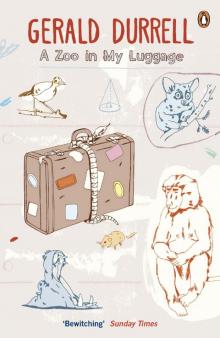 A Zoo in My Luggage
A Zoo in My Luggage The New Noah
The New Noah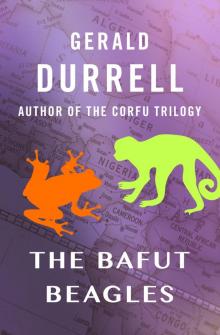 The Bafut Beagles
The Bafut Beagles Encounters With Animals
Encounters With Animals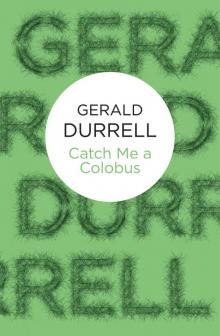 Catch Me a Colobus
Catch Me a Colobus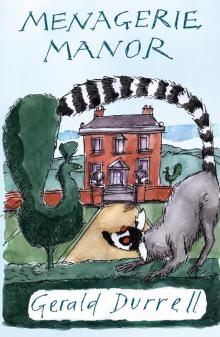 Menagerie Manor
Menagerie Manor The Picnic and Suchlike Pandemonium
The Picnic and Suchlike Pandemonium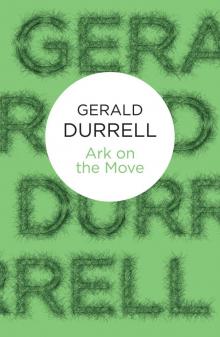 Ark on the Move
Ark on the Move My Family and Other Animals
My Family and Other Animals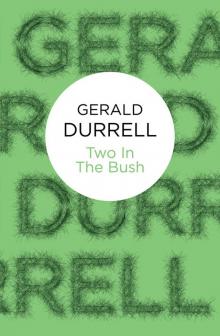 Two in the Bush (Bello)
Two in the Bush (Bello)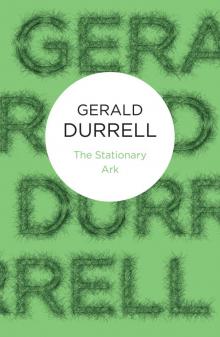 The Stationary Ark
The Stationary Ark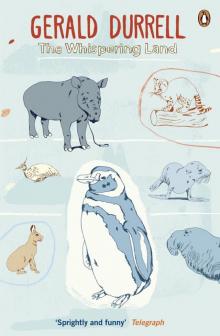 The Whispering Land
The Whispering Land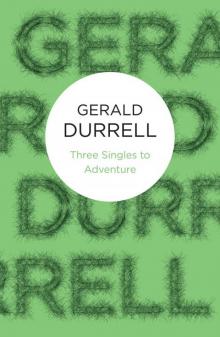 Three Singles to Adventure
Three Singles to Adventure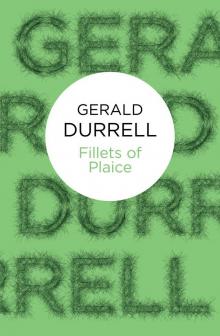 Fillets of Plaice
Fillets of Plaice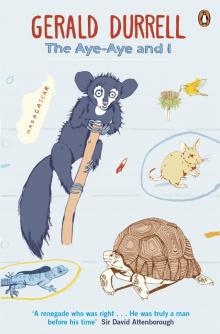 The Aye-Aye and I
The Aye-Aye and I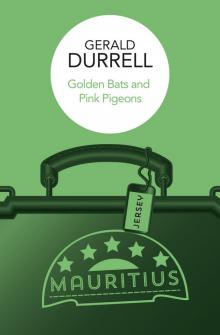 Golden Bats & Pink Pigeons
Golden Bats & Pink Pigeons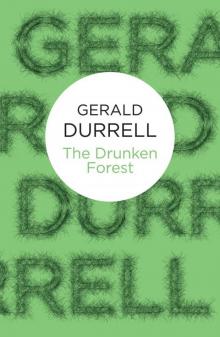 The Drunken Forest
The Drunken Forest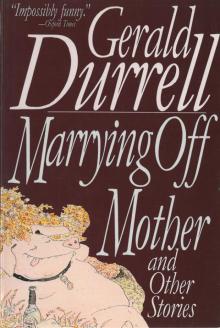 Marrying Off Mother: And Other Stories
Marrying Off Mother: And Other Stories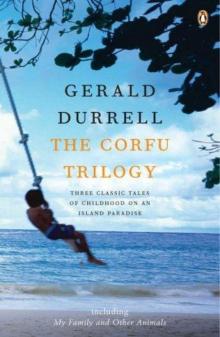 The Corfu Trilogy (the corfu trilogy)
The Corfu Trilogy (the corfu trilogy)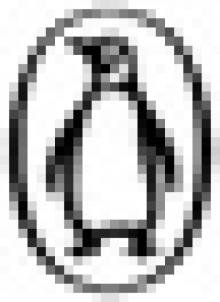 The Corfu Trilogy
The Corfu Trilogy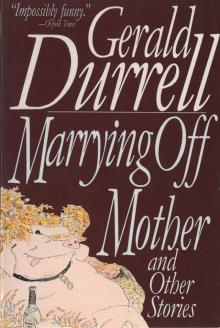 Marrying Off Mother
Marrying Off Mother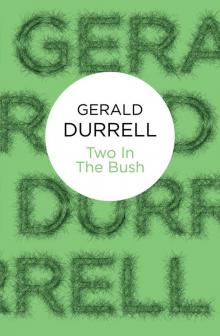 Two in the Bush
Two in the Bush